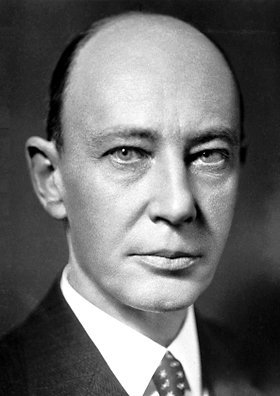George Minot (1885-1950)
When George Minot was diagnosed with diabetes, he was not expected to live very long. In 1921, the condition was fatal, and the primary treatment was a highly restrictive diet.
Luckily in 1922, Banting and Best announced their discovery of insulin and demonstrated success using it to treat patients living with diabetes. Soon after, Minot was able to receive insulin himself. In saving the life of Minot, insulin would change the lives of those living with another fatal condition – pernicious anemia.
George Richards Minot was born in Boston, Massachusetts to James Jackson Minot, a physician, and Elizabeth Whitney. His scientific career began as a child who had a keen interest in butterflies and moths. Butterflies subsequently became the subject of his first publication in 1902.
After attending Harvard Medical school, Minot worked at the Massachusetts General Hospital as both a physician and researcher. Minot conducted research on numerous topics, including cancer, arthritis and dietary deficiencies. While an expert on many diseases, he became most well-known for his research on blood disorders, particularly anemia.
Anemia occurs when the body is unable to produce enough red blood cells, thus decreasing the blood’s ability to carry oxygen. Pernicious anemia is a specific type of anemia that is caused by a deficiency of vitamin B12. Building off work done by George Hoyt Whipple, who found that a diet of raw liver could reverse the effects of anemia in dogs, Minot worked with William Murphy in 1926 to discover that raw liver could also be used to treat pernicious anemia in humans. For this discovery, Minot, Murphy and Whipple received the Nobel Prize for Physiology or Medicine in 1934.
After successfully proving that raw liver was an effective treatment, Minot searched for a more convenient method of administering liver to patients. Minot went on to work with chemist Edwin Cohn. Together, they developed a liver extract which could be taken orally. Treatment became more accessible as the liver extract was more potent and less costly than the large amounts of raw liver patients needed to consume.
George Minot passed away in 1950. Throughout his life, Minot made many contributions to the field of medicine. Insulin played a critical role in increasing both the quality and length of Minot’s life. Without it, Minot would not have played such a crucial role in the treatment of pernicious anemia and saved the lives of countless others.
— Written by Shivani Seth

